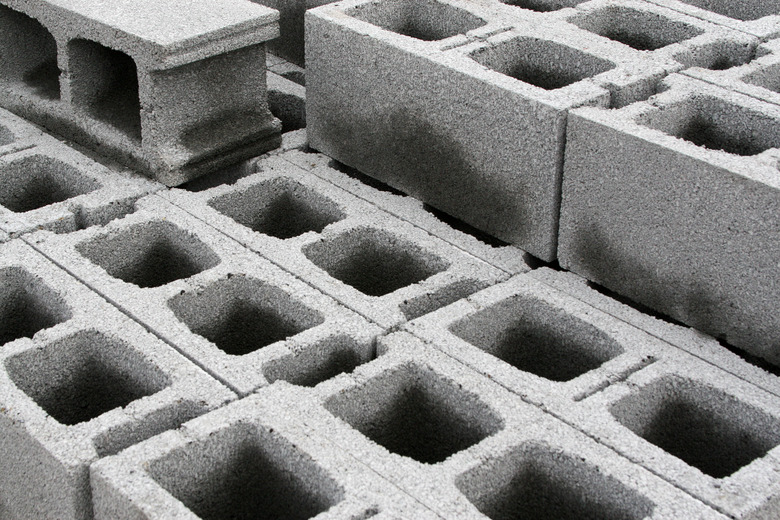How To Reinforce A Hollow Concrete Block Wall
Using hollow concrete blocks is an economical way to build walls or other structures. However, walls made with this type of block are not the most structurally sound nor the best at resisting flexural stress — the pressure that comes from the load walls bear from upper floors or a roof. If you want to create a reinforced hollow block concrete wall that's not only sturdier but less likely to collapse in the event of a storm or seismic activity, you can fortify it to withstand the test of stress and time.
Things Needed
-
Trowel
-
Rebar rods (as specified in the structural plans)
-
Dirt (optional)
How to Reinforce a Hollow
Concrete Block Wall
1. Lay Four Courses
Lay your first four courses (layers) of the concrete block wall. On the fourth course, trowel a skim coat (very thin coat) of mortar on the block.
2. Drop the Rebar
Hollow concrete blocks have two openings, referred to as cells. Drop rebar rods into every other cell (each block should have one bar inserted into it). Double-check your construction drawings — some buildings require specific amounts of rebar to be dropped in vertically. The plans will also specify how long each piece of masonry rebar must be. Make sure the bars are long enough to reach (and extend) through the next four courses of concrete blocks.
3. Get Vertical
For hollow blocks located next to a door or window opening, drop extra vertical rebar in the cell. These areas of the wall are subject to greater stress during storms or seismic activity and require extra-added reinforcement.
4. Pour the Fill Mortar
Pour fill mortar into each cell. (Fill mortar is a specific mix of Portland cement designed specifically for vertical pours in block walls). After it's been poured, pull the vertical masonry rebar into the very center of the concrete block. This way, when you go to lay the next course, you won't need to bend any bars that were knocked out of place during the pour.
5. Let Cure and Repeat
Once the mortar has cured, lay down the next four courses on top of the one you just poured. Repeat steps 1 through 6 until your wall is the desired height.
Tip
You can substitute the fill mortar poured into the hollows of the block with simple dirt. Fill and pack the hollows tightly and it will provide just as much insulation and structural support as the mortar.
Warning
When the mortar is still wet, concrete block walls can fall over, potentially causing severe injury or damage. Make sure the area is clearly marked "caution: wet mortar" so that no one walks near the wall until it's completely hardened.
